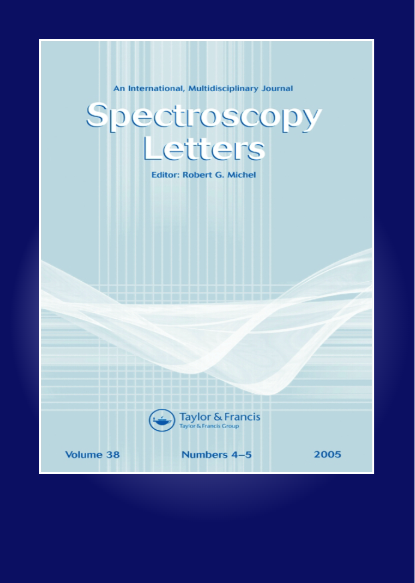Multi-analytical techniques for characterization of ancient Egyptian pottery objects from Cairo University excavations at Saqqara
IF 1.6
4区 化学
Q3 SPECTROSCOPY
引用次数: 3
Abstract
Abstract Archaeological pottery shows various forms of deterioration and degradation. This research aims to determine the chemical composition and diagnose the damage manifestations of three pottery vessels from the archaeological site of Saqqara. The AutoCAD, digital microscope, X-ray diffraction, polarized microscope, portable X-ray fluorescence, and scanning electron microscopy are utilized to understand the preservation status of pottery vessels. According to the investigation’s findings, the chosen vessels had cracks, accumulated dirt, missing parts, peeling of the slip layer, and black deposits. The X-ray diffraction analysis showed that Albite, Anorthite, Wollastonite, Quartz, Calcite, and Hematite are the primary constituents of the vessels. However, the polarized microscope showed the plagioclase feldspar, indicating that the Nile clay is the source of the raw clay and that the temperature rose above 800 °C. Portable X-ray fluorescence and scanning electron microscopy revealed different concentrations of Si, Fe, and Ca, which are the main pottery components. In addition to the presence of high concentrations of chloride salts. There is no doubt that this will help to preserve the archaeological pottery in future studies.开罗大学在萨卡拉发掘的古埃及陶器特征的多种分析技术
考古陶器呈现出各种形式的变质和退化。本研究旨在对萨加拉考古遗址出土的三件陶器进行化学成分测定和损伤表现诊断。利用AutoCAD、数码显微镜、x射线衍射、偏光显微镜、便携式x射线荧光、扫描电镜等工具了解陶器的保存状况。根据调查结果,被选中的船只有裂缝、堆积的污垢、零件缺失、滑动层剥落和黑色沉积物。x射线衍射分析表明,钠长石、钙长石、硅灰石、石英、方解石和赤铁矿是血管的主要成分。然而,偏光显微镜显示斜长石,表明尼罗河粘土是原料粘土的来源,温度上升到800℃以上。便携式x射线荧光和扫描电子显微镜显示不同浓度的Si, Fe和Ca,这是陶器的主要成分。除了存在高浓度的氯化物盐。毫无疑问,这将有助于在今后的研究中保存考古陶器。
本文章由计算机程序翻译,如有差异,请以英文原文为准。
求助全文
约1分钟内获得全文
求助全文
来源期刊

Spectroscopy Letters
物理-光谱学
CiteScore
2.90
自引率
5.90%
发文量
50
审稿时长
1.3 months
期刊介绍:
Spectroscopy Letters provides vital coverage of all types of spectroscopy across all the disciplines where they are used—including novel work in fundamental spectroscopy, applications, diagnostics and instrumentation. The audience is intended to be all practicing spectroscopists across all scientific (and some engineering) disciplines, including: physics, chemistry, biology, instrumentation science, and pharmaceutical science.
 求助内容:
求助内容: 应助结果提醒方式:
应助结果提醒方式:


